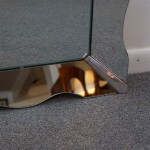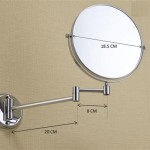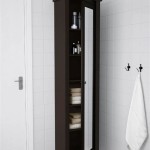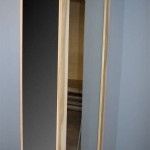How To Replace a Broken Mirror in a Frame
Replacing a broken mirror within a frame requires careful handling and the right tools to ensure a safe and successful outcome. This guide provides step-by-step instructions for replacing a broken mirror while preserving the original frame.
Safety Precautions: Before beginning, prioritize safety. Broken glass presents significant hazards. Wear thick gloves designed for handling glass. Safety glasses are also essential to protect the eyes from flying shards. Cover the work area with a drop cloth or old newspapers to catch any stray glass fragments and simplify cleanup.
Gathering Necessary Materials: Assemble all necessary materials before starting the replacement process. This helps ensure a smooth and uninterrupted workflow. Required materials include: heavy-duty gloves, safety glasses, a drop cloth or newspapers, a flat-head screwdriver or putty knife, replacement mirror glass (cut to the correct dimensions), mirror adhesive, masking tape, a measuring tape or ruler, and a vacuum cleaner with a hose attachment.
Removing the Broken Mirror: Carefully remove the frame containing the broken mirror from the wall. Place it face down on the protected work surface. Use a flat-head screwdriver or putty knife to gently pry out any retaining clips or glazing points holding the broken mirror in place. If the mirror is adhered with adhesive, the process may require carefully breaking the adhesive seal. Proceed with caution to avoid damaging the frame. Once loosened, carefully lift out the broken mirror pieces. Dispose of the broken glass immediately and safely, wrapping it thickly in newspaper and labeling it clearly.
Cleaning the Frame: With the broken mirror removed, thoroughly clean the frame's rabbet, the recessed area where the mirror sits. Remove any remaining adhesive, old mirror fragments, dust, or debris. A vacuum cleaner with a hose attachment is useful for removing small glass particles. A clean rabbet ensures proper adhesion of the new mirror.
Measuring for the Replacement Mirror: Accurate measurement is crucial for a proper fit. Measure the inside dimensions of the rabbet carefully using a measuring tape or ruler. Record the measurements and provide them to a glass supplier for cutting a new mirror to the precise specifications. It's recommended to order the replacement mirror slightly smaller than the opening (approximately 1/8 inch smaller on each side) to allow for expansion and contraction.
Applying Mirror Adhesive: Once the replacement mirror is ready, apply mirror adhesive to the back of the mirror. Follow the adhesive manufacturer's instructions regarding application method and quantity. Typically, applying adhesive in a grid pattern or evenly spaced dabs ensures adequate coverage and prevents air bubbles from forming between the mirror and the frame.
Positioning the New Mirror: Carefully place the new mirror into the rabbet of the frame. Ensure it is centered and evenly spaced within the opening. Gently press the mirror against the frame’s back to secure the adhesive bond.
Securing the Mirror: Depending on the frame design, securing the mirror may involve replacing the original retaining clips or glazing points. Alternatively, masking tape can be used to hold the mirror in place while the adhesive cures. Follow the adhesive manufacturer’s recommended curing time before removing any tape or applying significant pressure to the mirror.
Cleaning and Finishing: Once the adhesive has fully cured, clean the new mirror with a suitable glass cleaner. Remove any fingerprints or smudges. Inspect the frame for any remaining adhesive residue and carefully remove it. The frame is now ready to be re-hung or displayed.
Considerations for Different Frame Types: While these general instructions apply to most framed mirrors, some frame types may require slightly different approaches. Antique or intricately designed frames may necessitate extra care to avoid damage. Frames with specific backing materials may require alternative methods for securing the mirror. If unsure, consulting a professional framer or glass specialist is recommended, especially for valuable or complex frames.
Disposing of Broken Glass Safely: Proper disposal of broken glass minimizes the risk of injury to others. Wrap broken mirror pieces securely in thick layers of newspaper or cardboard. Label the package clearly as "Broken Glass" to alert waste handlers. Check with local waste management regulations for proper disposal methods in the community.

How To Repair A Broken Mirror Frame Diy Inspired

How To Repair A Broken Mirror Frame Diy Inspired

How To Repair A Broken Mirror Frame Diy Inspired

How Do You Remove Broken Glass From Stand Up Mirror Hometalk

Repairs To Broken Mirrors Glass Table Tops And Picture Frame Inter

How To Fix A Broken Mirror Instead Of Replacing It Worst Room

How To Repair A Broken Mirror Frame Diy Inspired

How To Repair A Broken Mirror Frame Diy Inspired

How To Replace Broken Glass In A Picture Frame 9 Steps

How To Fix A Broken Mirror Instead Of Replacing It Worst Room








